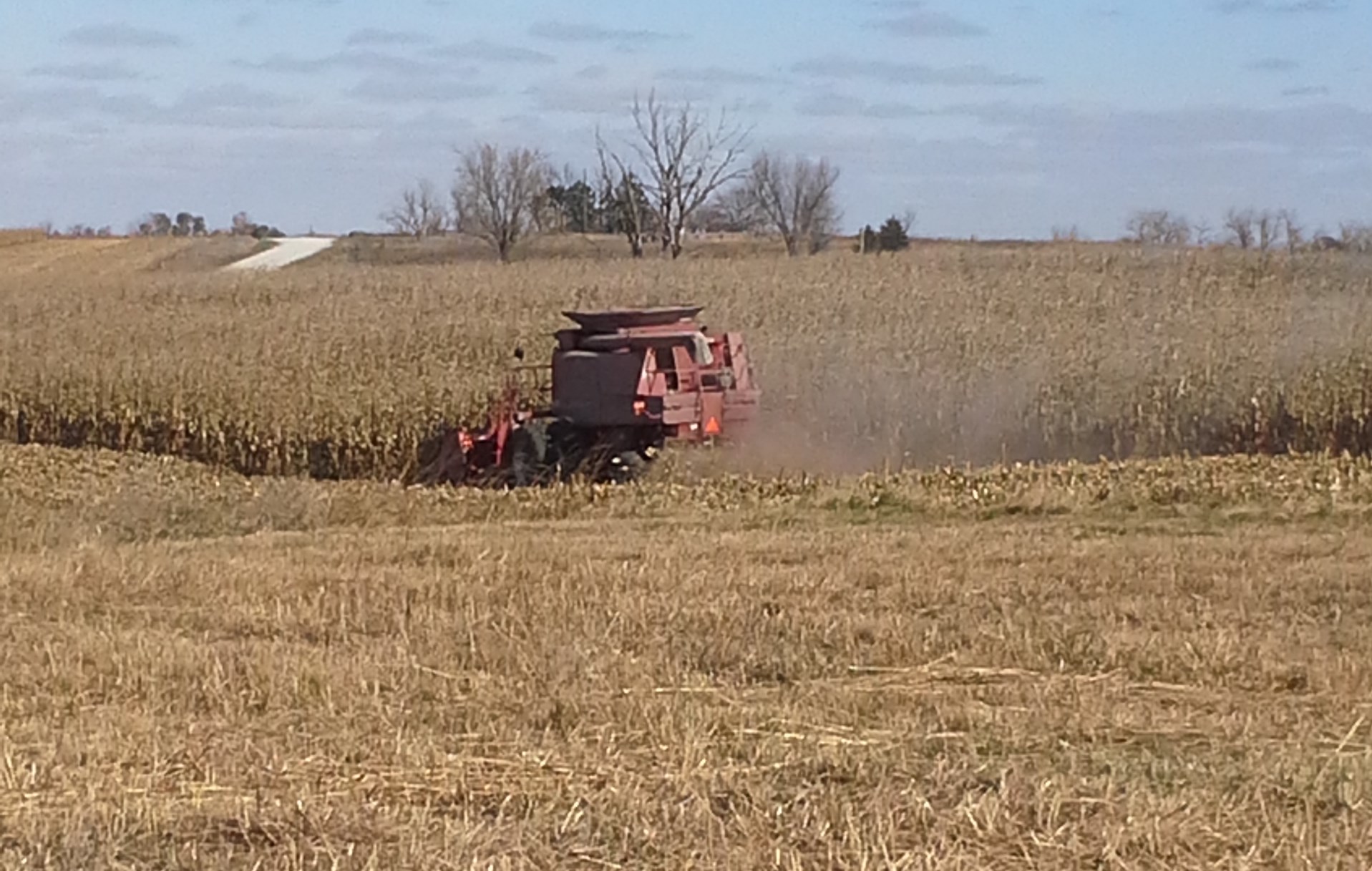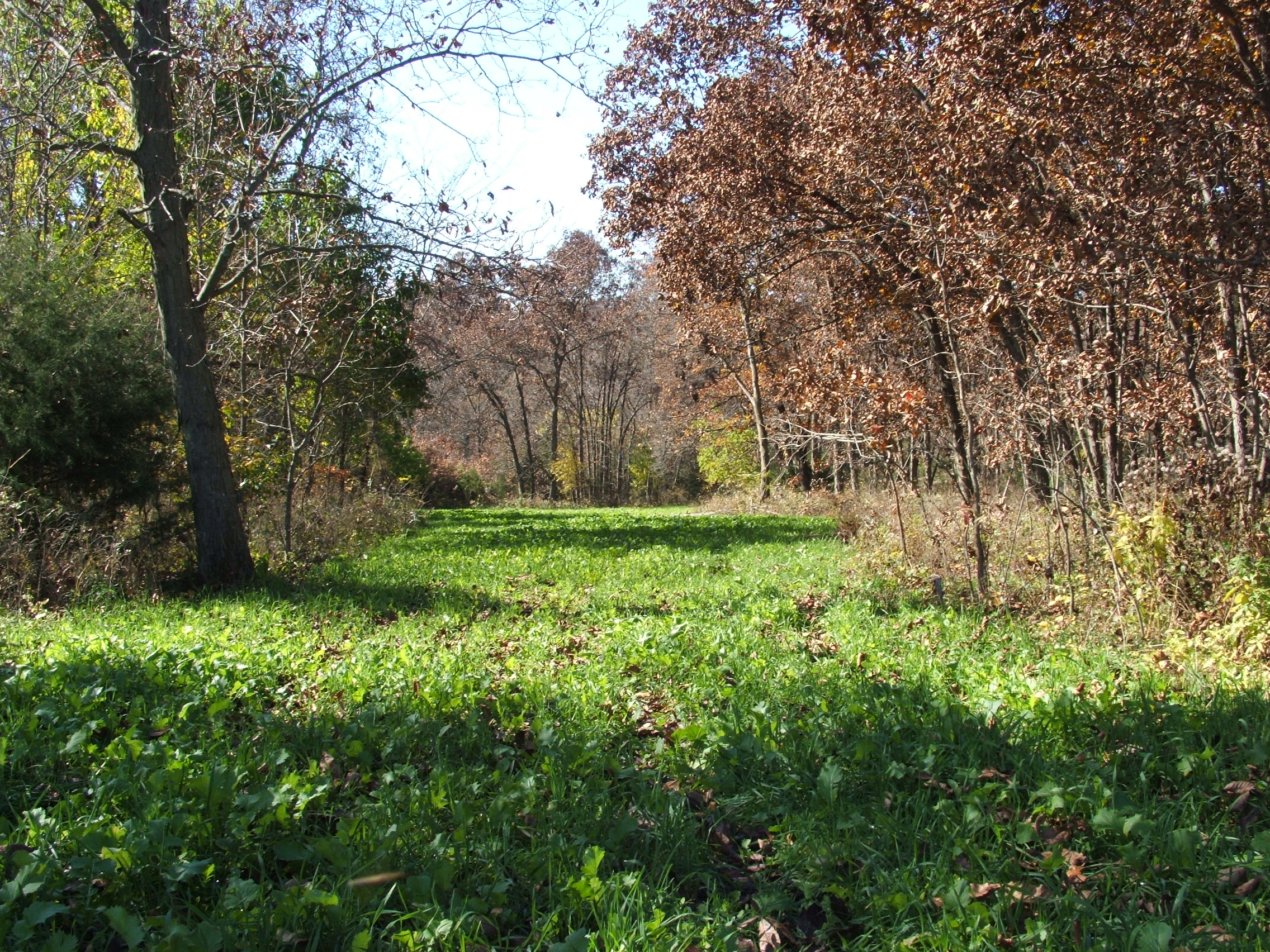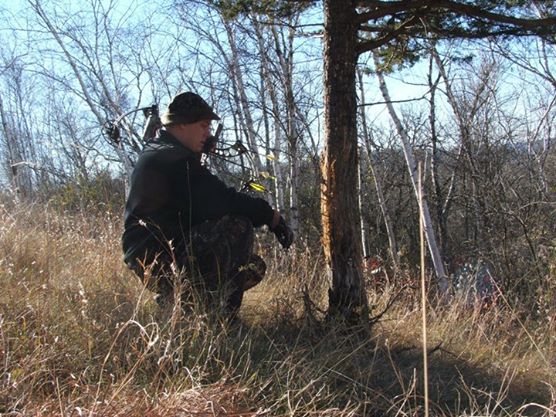Whitetails 365 November-The Hunt is On! (A version of this article is published in the November 2015 issue of Iowa Sportsman Magazine.)
Many hunters count the days each year till season opener. How many hours do you have invested in the season before its even open? Money spent? In habitat management alone, I spend a solid weekend every month on my farm outside of hunting season. That’s 2 or 3 days a month for 9 months…maybe more…and each day is a sun up to sun down kind of day. Add it all up and I’m looking at 300 plus hours each and every year spent on my farm in the field. Add up the hours away from the farm building blinds, working on machinery, doing maintenance on stands, researching plant varieties, etc. and I could easily add another 200 hours. Now, add in the hard money I’ve spent and it almost starts to get embarrassing…at least to someone who doesn’t share or understand my passion for hunting big whitetail! Everything I’ve just described is the investment I have made into my hunting season. For me, the time and work I put in each year is the most enjoyable part of my hunting experience. October can start out slow for a whitetail hunter. But, it’s now November. The hunt is on!
Fall Harvest Transition-Early season whitetail hunting in October can be difficult in most areas of the mid-west. It’s difficult because with so much food available the deer can be really spread out. At the time of writing this article, I took a quick inventory of the agricultural food sources available to the local deer herd in my area. A drive around “the block” and I’m looking at a few hundred acres of corn and soybeans, and another hundred acres or so of prime alfalfa. Add in natural preferred sources of food like acorns and you can see why it’s hard to pin down a good buck. During the hunting season, however, the fall harvest will take care of this.

The fall harvest can drastically change deer activity and where they spend most of their time. Today’s modern harvest equipment leaves very little behind.
In most years, by the time November comes around most of the soybeans and much of the corn crop has been harvested. Add in the fact that today’s harvest equipment is so efficient and you’ll find that most of the food on these fields is gone shortly after the combines roll through. This fall harvest will start to congregate deer around the remaining preferred food sources. Alfalfa will remain a great food source until some heavy frosts have sent it dormant. This is the time of year when all your hard work and investments into your hunting lands will start to show themselves. As food supplies start to dwindle, your food plots will start to take over and draw deer. This transition or shift from a spread out deer herd to a deer herd more concentrated around your food plots becomes more and more evident in November. The fall harvest is very significant for a whitetail hunter in farm country. For the hunter that has spent the time and money to put in food plots, this post-harvest time is when your investment starts to pay off with greater dividends.
I find that once the Ag soybeans and corn have been harvested, the drawing powers of my food plots really start to kick in. I have planned for this way back in the spring. I plant soybeans each year knowing that once the fall harvest is complete, the high protein beans on my farm will bring in deer. I know that once alfalfa has seen some significant frosts that my winter rye, rape, and turnip blends will start to attract deer better than at any other time so far. Because I’ve made these investments on my farm, I know that I will have preferred food sources throughout the remainder of the season. By guaranteeing that my hunting grounds have good food sources, I have also guaranteed that my hunting will not only be good, but should be amazing. This transition that takes place after the fall harvest is something that you can plan for and anticipate each and every year. The returns on our investments are starting to pay off!
November Hunting Strategies for the Whitetails 365 Hunter-I believe peak hunting for the mid-west, including Iowa, is always around Halloween each and every year. This is because bucks are reaching peak hormone levels but there are still very few does ready to breed. This pent up level in the bucks are causing them to rub and scrape vigorously in their home ranges. They are actively seeking any ready and available doe within their ranges…but because few are coming into heat, the activity of bucks is at a peak. This is NOT peak breeding…rather it is peak hunting! Early November is a phenomenal time to hunt buck sign like rubs and scrapes adjacent to preferred food sources on evening hunts. Bucks of all age classes will be on their feet looking for receptive does during day light hours. There are very few places better to make your ambush than directly overlooking one of your food plots this time of year. If you have established green interior plots, this is the time to hunt them. Bucks simply can’t resist these interior plots as they actively rub and scrape in and around them. If you have natural bedding areas or have created your own areas of security cover, hunting the downwind side of them on morning hunts can be a killer setup.
As November 10th or so approaches each year, you will start to find that because more and more does are coming into heat that your buck sighting will start to be more sporadic. Peak breading for Iowa is year in and year out right around November 15th. So, there is about a 10 day window from November 10th to the 20th where a majority of does get bread. During this part of the rut, it is not uncommon for me to go several sits between buck sightings…and then when I do happen to have a hot doe by me I’ll have several if not a half dozen bucks around me. This time of year can get frustrating! This frustration can cause us to make mistakes by being impatient. If you have good food and good habitat being patient is the key to your success. Hunting preferred food sources and interior plots on evening hunts is still a solid strategy. Hunting travel routes and downwind sides of bedding areas is still the best way to harvest a good buck. A good hunter will recognize now is not the time to panic.

By November 20th, a great majority of the doe have been bread. Some are still coming into heat but in many ways the deer herd, bucks included, are starting to put the rut behind them and key in on food. I’m not saying the rut is over, just that the activity will start to change! A great game plan this time of year is once again to concentrate your evening efforts on food, and your morning efforts on bedding cover and travel routes. I’ve said over and over that my favorite plot is soybeans…this time of year if you have successfully established a soybean plot that still holds beans; you will have deer on your property.
Keeping it Simple-During all three stages of November, a solid game plan is to simply hunt food sources at night and the downwind side of cover or travel routes on morning hunts. Use your entrance and exit routes and strategies so that you don’t bump deer going in or coming out of your sets. Your odds of taking a good buck increase the more patient you are and the more time you spend in the field. Move around as much as possible by having several stands available for each wind direction. Always hunt with the wind and put your confidence in the exceptional habitat that you’ve created the past 9 months.
I get a lot of questions from hunters about calling and recently decoying. While there is a time and place for both, I find that any time I’m blind calling (calling when I can’t see deer) with my grunt call or rattling antlers it’s because I’ve become impatient or have lost confidence in the set I’m sitting in. Grunting and rattling makes for great entertainment to pass the time or on your favorite hunting show, but if you have confidence in your sets I would use these methods sparingly. Blind calling is a good way to burn out a set unintentionally and render the methods useless when you actually have a good buck in sight but need to coax him in a little. Using a decoy can definitely be fun but raises the risks of things going wrong if you don’t need one. I seldom use a decoy unless I’m sitting on a larger food source that I can’t cover with my bow. Even then, I’ll only use a decoy if I think the upside of drawing in a buck is greater than the downside of spooking does and non-target bucks. Calling and decoying are fun ways to hunt in November, but remember the more you use them the less effective they become and the more potential there is to put unintended pressure on the deer you are hunting.

Enjoy the moment.
Enjoy the Moment-I am a firm believer that the success I have (or don’t have) each fall is a direct correlation to the investment I have made in my hunting grounds leading up to each fall. The hard work is done…now it’s time to sit back and take it all in. Enjoy the sounds and smells of a November hunt…a buck grunting or a wood pecker opening up a hole in a dead box elder. Enjoy a brilliant sunrise or sunset, or the silhouette of a deer on a ridge top. Hunt hard and smart and appreciate the time you have in the field.
In November of this year, there won’t be any habitat or management practices on my farm. The stage is set and the hunt is on. It’s simply time to sit back and enjoy the sport we all love so much. Be happy for your neighbor that shoots the buck you’ve been watching all summer and don’t judge your hunt’s success by how much your buck scores. Take stock and note of your management efforts and make a mental note of what worked for you this year.
December is the last Whitetails 365 for 2015. I will be giving some pointers on how to take advantage of standing grain crops and brassicas. December is about late season hunting…it is also the time I start planning for next year. In 2015, I concentrated these articles on habitat management. 2016 will include more advanced ideas around habitat…but I also want to share some ideas about making some perfect sets to hunt. In December’s article, I will outline what you can expect from Whitetails 365 in 2016!
